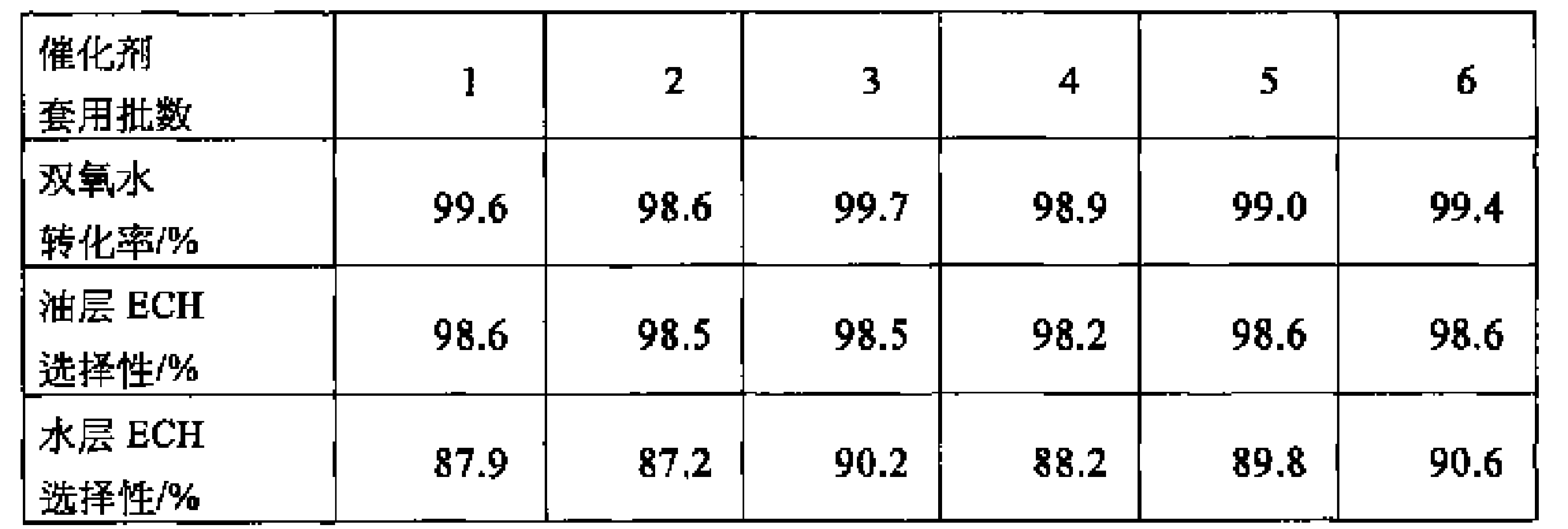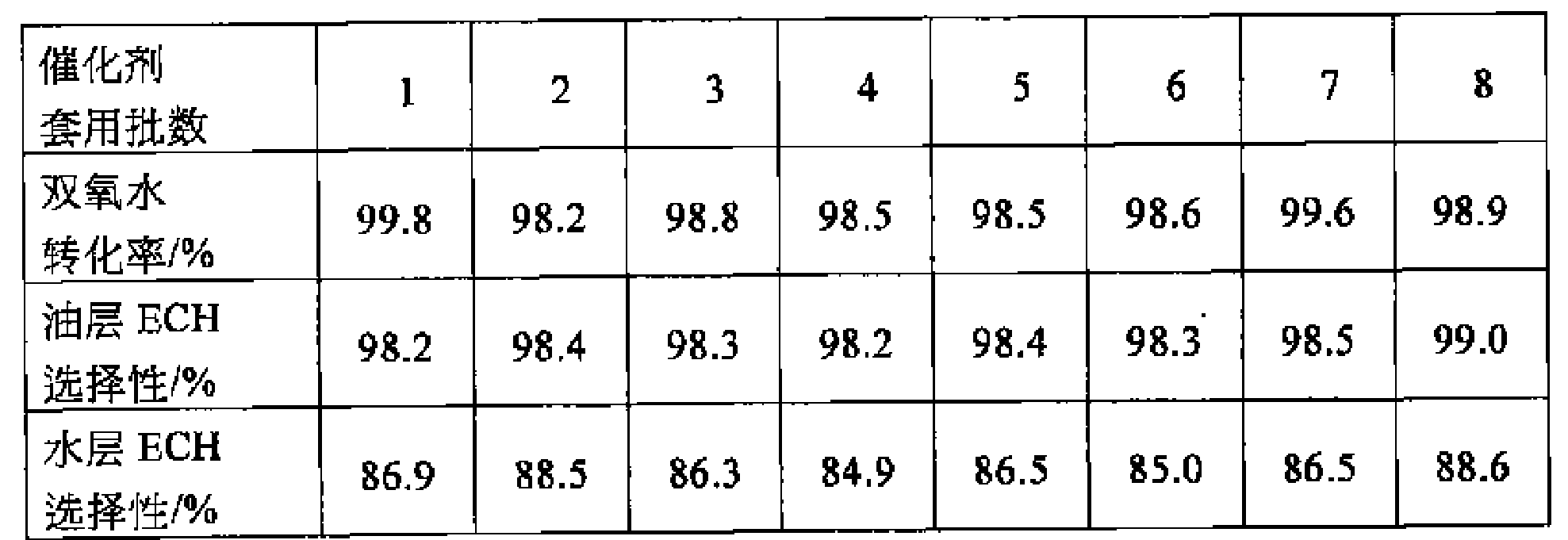Method for regenerating titanium-silicon molecular sieve catalyst
A titanium-silicon molecular sieve and catalyst technology, which is applied in molecular sieve catalysts, chemical instruments and methods, physical/chemical process catalysts, etc., can solve the problems of increased equipment investment, high roasting temperature, and long regeneration time, and achieve small equipment investment and regeneration The effect of good effect and short regeneration time
- Summary
- Abstract
- Description
- Claims
- Application Information
AI Technical Summary
Problems solved by technology
Method used
Image
Examples
Embodiment 1
[0032] Catalyst regeneration process: methanol washing → stripping → hydrogen peroxide oxidation → methanol washing. The regeneration operation steps are as follows:
[0033] (1) Filter cake 18g (wet catalyst) filtered after the epoxidation reaction has a solid content of about 50-60%. Add 36g of methanol in a four-necked flask, stir and heat up to about 65°C, and wash for 60min to make the catalyst pores Oligomers and organic matter on the surface of the catalyst are dissolved in methanol, after reflux is completed, the temperature is lowered and filtered, and the methanol liquid is evaporated and recovered.
[0034] (2) Put 18 g of filter cake into a four-neck flask after filtration, and steam to strip a little oil, and remove entrained and dissolved organic matter in the catalyst slurry until the gas / liquid temperature reaches 100°C.
[0035] (3) After stripping, the catalyst slurry (with a solid content of about 33%) was cooled from 100°C to 80-90°C, and 21.6g of 35%H 2 ...
Embodiment 2
[0040] The catalyst filter cake is first washed with deionized water to recover the ECH therein. Then go through the catalyst regeneration process: stripping→hydrogen peroxide oxidation→methanol washing. Filter cake: hydrogen peroxide = 1:1 (mass ratio). The operation steps after washing with water are the same as in Example 1. The difference is that before oxidation, the solid content of the catalyst slurry is diluted from 33% to 10-15%, that is, the concentration of the catalyst after stripping is 10-15%, and then 35% hydrogen peroxide is added dropwise for oxidation, which is beneficial to the slurry in the oxidation process. material fluidity.
[0041] The verification experiment of epoxidation reaction activity is the same as that in Example 1.
[0042]
Embodiment 3
[0044] The catalyst filter cake is first washed with deionized water to recover the ECH therein. Then go through the catalyst regeneration process: stripping→dilute hydrogen peroxide oxidation→methanol washing. Filter cake: hydrogen peroxide = 1:1.75 (mass ratio). The operating steps are the same as in Example 1.
[0045] The difference is that the concentration of hydrogen peroxide is 10-15%.
[0046] The verification experiment of epoxidation reaction activity is the same as that in Example 1.
[0047]
PUM
 Login to View More
Login to View More Abstract
Description
Claims
Application Information
 Login to View More
Login to View More - R&D
- Intellectual Property
- Life Sciences
- Materials
- Tech Scout
- Unparalleled Data Quality
- Higher Quality Content
- 60% Fewer Hallucinations
Browse by: Latest US Patents, China's latest patents, Technical Efficacy Thesaurus, Application Domain, Technology Topic, Popular Technical Reports.
© 2025 PatSnap. All rights reserved.Legal|Privacy policy|Modern Slavery Act Transparency Statement|Sitemap|About US| Contact US: help@patsnap.com



